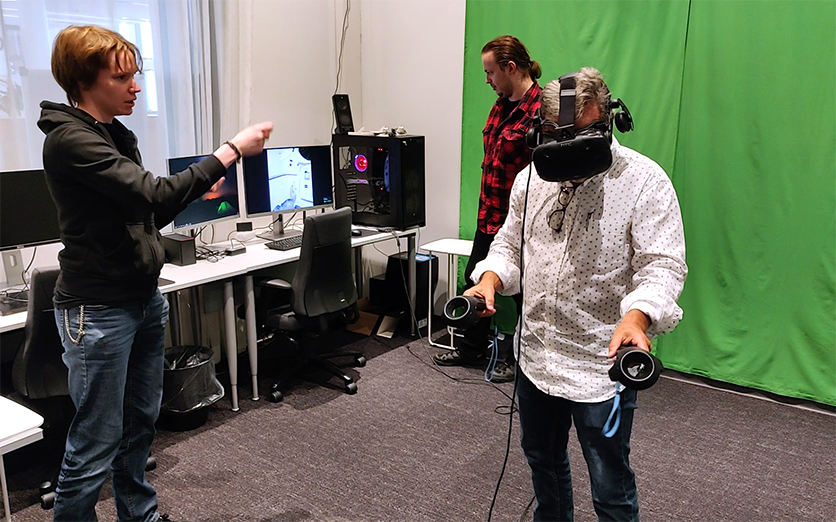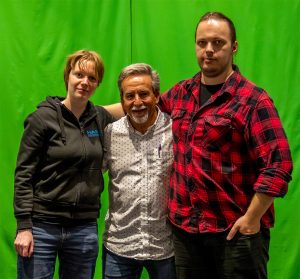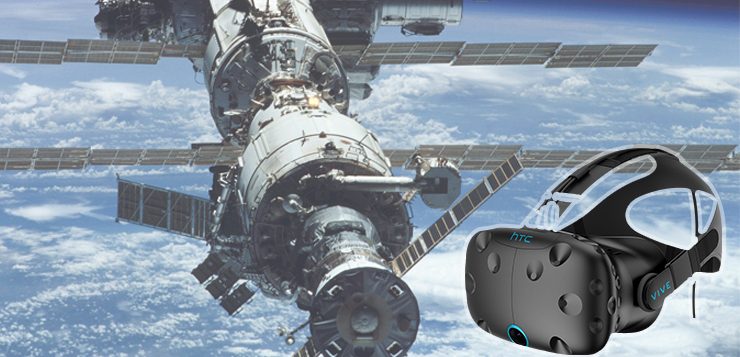“Ohkay everyone! Next Wednesday we are introducing our research unit to a NASA astronaut. I hope everyone can speak a little bit about their projects and what kind of work you do at here”.
By that time, I was utterly frozen. I didn’t know what kind of presentation I should give to our visitor. Quick tour of what you can do with game engines? Give a VR headset to him and ask him to dismantle a 3D modeled 3D printer in virtual reality? Maybe he is already familiar with benefits of virtual reality because he is working at NASA?
“How about you show him realistic looking space shuttle launch simulator and after that ask his thoughts about what kind of possibilities he can see in virtual reality?” Not a bad idea at all from my project manager!
I tested couple of softwares and decided to go with “Home – A VR Spacewalk”. I was really excited about how realistic it looked. I felt like I was really at the International Space Station (ISS) and ready to take my first spacewalk! Great, I will go with this one!

Source: Steam
Wednesday came and our visitor, Charles Camarda, arrived at our humble research unit. Mr. Camarda impressed us all with his delightful persona and his general interest in people. Our conversations included beneficial use of game engines, my thesis, HAMK Smart’s new project named VATTU (Virtual Products in Manufacturing Industry, which in short, aims to create and put into practice new knowledge and skills related to beneficial use on game engine technologies in manufacturing industry) and other related topics.
I told that the first time I started working with game engines was spring 2018. The subject of my thesis was to compare different CAD file formats in Unreal Engine. The process to import your models to a game engine is an easy task to learn, but when it comes to building functionalities, that takes more time. Basics of programming helps you a lot and some people who have no experience can also hop board with Unreal’s own visual programming language (of course there are more traditional programming languages to use like C++).

Guiding Mr. Camarda with the controllers. Toni is watching Mr. Camarda’s VR experience from computer’s display.
After talking about beneficial uses of game engines, it was time to start our main event. While Toni set the computer, I gave the VR headset and controllers to Mr. Camarda and his journey at International Space Station started.
Software starts from ISS’s US segment’s the Joint Quest Airlock (Crew Lock side): Entrance where astronauts open last hatch between ISS and infinite space. Immediately when the hatch was opened and Mr. Camarda moved himself outside by grabbing the handrails to see planet Earth looming far far away—he was totally delighted.
“This is so cool! This is real!”
After the VR experience, it was interesting to hear more details about how to move in space and how NASA trains their astronauts: One method to train astronauts for spacewalking is to use virtual reality. Even Home – A VR Spacewalk software’s main idea is to entertain the user, it still gave us good experience of what game engines or virtual reality can do. It can teach us how to repair stuff or giving an experience on how to work in different environments.

Last pose with Charles Camarda and Toni Lavonen.
Last words: I’m always happy to see people trying virtual reality and getting that WOW feeling. It is also interesting when they share their knowledge about the subject. It’s an awesome feeling!
Thanks, Mr. Camarda, for visiting HAMK Smart and our GamEngine lab!
Related links:
Charles Camarda heading Rapid Product Development Course at HAMK (in finnish)
https://www.hamk.fi/2019/nasan-astronautti-kurssinvetajana-hamkilla/



